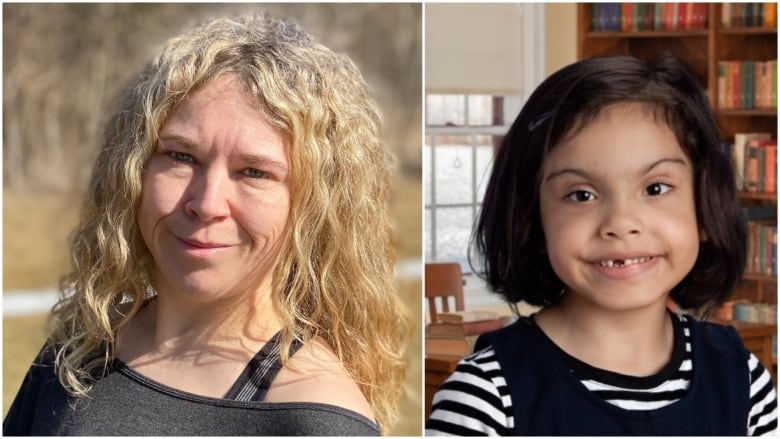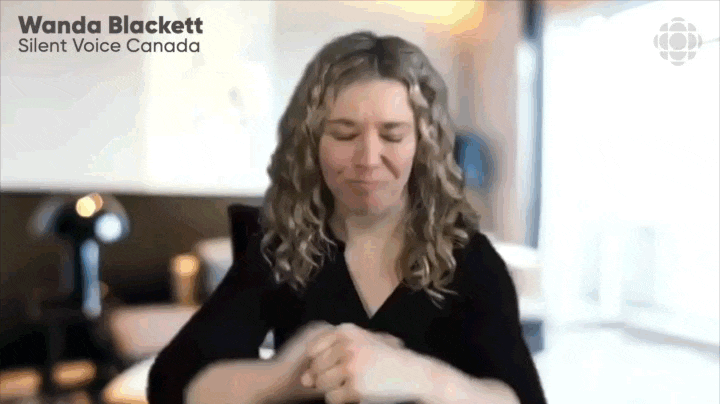Ontario high schools will teach sign language. Here are some basic signs you can learn right now
Exposing students to sign language will improve life for deaf people, says Wanda Blackett

New sign language classes in Ontario high schools could one day make a significant difference to the lives of the deaf community, even just in daily interactions, says one advocate.
"If you go into a store and somebody who works there can sign — great, you can ask them a question," said Wanda Blackett, a resource development coordinator with Silent Voice Canada, an organization that serves the deaf community.
"Obviously not everybody is going to be super proficient ... but you're going to see people able to have those basic conversations," she told The Current's Matt Galloway.
Kids who learn about sign language and deaf culture in school now will also be the doctors, advocates hand leaders of the future, wich Blackett thinks will "open up a lot of doors" in terms of understanding and accessibility in the long term.
WATCH | Wanda Blackett demonstrates signs that everyone should know
The courses in American Sign Language (ASL) and Langue des signes québécoise (LSQ) will be part of the Ontario curriculum come the fall term. The province is the first jurisdiction in Canada to offer the courses this widely, though it will be up to individual school boards whether they're available, as boards are not obliged to offer all courses on the curriculum.
Blackett was born hard of hearing, and as a result often felt shy and isolated as a child. But learning sign language in university opened up a whole new world, something she's glad will now be available to hard-of-hearing students at a younger age.
"I got to join the deaf community and I found my own home, I found my language, something that's 100 per cent accessible to me," she said.
She thinks that if she had the opportunity at a younger age, that might have made her "less ashamed of being deaf."
Learning to sign "made such an impact on who I am as a person, and my confidence," she said.
Renata Davies saw a similar shift when her 9-year-old daughter, Mila, was given the opportunity to learn sign language with peers, in an immersive environment.
Mila is deaf, and has a twin brother, Jonathan, who is hearing. The twins were attending school in Oshawa, Ont., where Mila had access to some services, but still struggled. The family moved to Belleville, Ont., so she could attend a school for the deaf, where Davies saw a remarkable change.

"She became more confident, she became more outgoing. Academic-wise, she started doing a lot better," said Davies.
"And being in that immersive culture 100 per cent of the time, she started learning more sign language, so her language skills expanded exponentially."
Davies hopes high school students will take up the courses, and wishes it had been available to her at their age.
Learning sign language
Blackett demonstrated some ASL signs that hearing people could learn, to help them connect with a person who is hard of hearing or deaf. She started with a very simple question: What's your name?

If someone responds and asks "Are you deaf?" here's how to recognize that question, or ask it of somebody else — and how to answer yes, or no.


Signers will spell out new or unusual words letter by letter, but when the pandemic struck, the community had to come up with a new sign for COVID, to save time.
"You can think about the sign as actually looking like the virus — you can see that visually," Blackett explained.

The pandemic has made communication harder for "deaf folks, who are trying to speech-read in some cases," because masks are covering most people's lips, Blackett told The Current.
"I would encourage people to think about writing back and forth with the deaf person, taking out your phone and texting back and forth when you meet a deaf person," she signed.
"That makes communication a lot easier and it's much more respectful."
When it comes to signs about mask wearing in general, Blackett said signers won't express all the words needed for a sentence in English, but "would just actually show the movement of putting the mask on, or taking the mask off."

One thing everyone might have in common these days is being too exhausted by the pandemic to cook, and opting to order in. Luckily, there's a sign for that.

And as physical distancing measures have kept people apart, there are simple ways to let people know you care.


Blanchett wants people to understand that being deaf is "not just about the fact that we can't hear."
"It really is about our language, our values, the time we spent together, our culture that we share and celebrate."

Written by Padraig Moran, video and animated tutorials produced by Andrew Nguyen and Padraig Moran. Audio interview produced by Ryan Chaterjee, with interpretation from Gloria Brifoglio.
Hear full episodes of The Current on CBC Listen, our free audio streaming service. The Current produces full transcripts of all episodes, published within 24 hours of broadcast, which can be found attached to the episode in question on our homepage.

